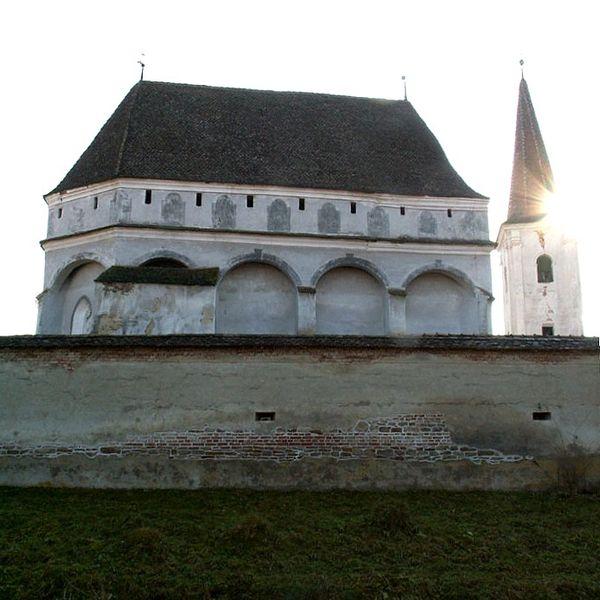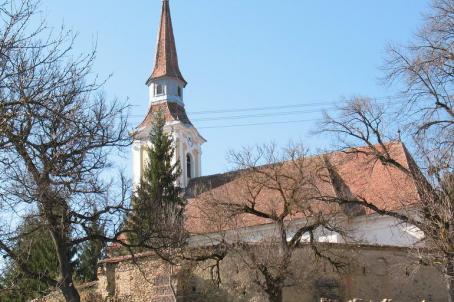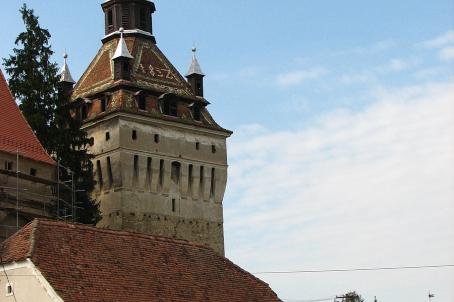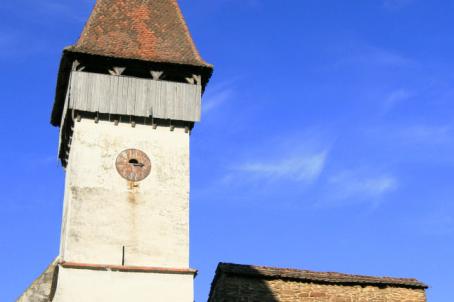Cloaşterf Fortified Church
After the old church was destroyed, a new construction was erected between 1521 and 1524 and finds itself in a well-preserved state today, as well as the polygonal ring wall strengthened by towers in each corner. The southern tower was replaced in 1819 with today’s bell tower. The aisle-less church with polygonal chancel was provided with defence level and machicolation between the buttresses from this construction phase.
The parapets of the 18th century three-side gallery inside the church are decorated with floral motives and paintings illustrating different fortified churches. The organ above the altar was installed in 1832 on the substructure of the original 1716 altar. One of the oldest inscriptions from Transylvania can be found behind this altar: 1524 is the year when the construction works of the church were completed.
About this building
For more information visit on this building visit https://kirchenburgen.org/en/location/klosdorf-cloasterf/






